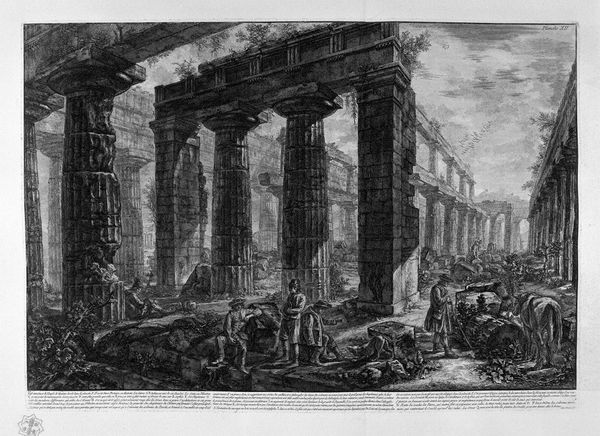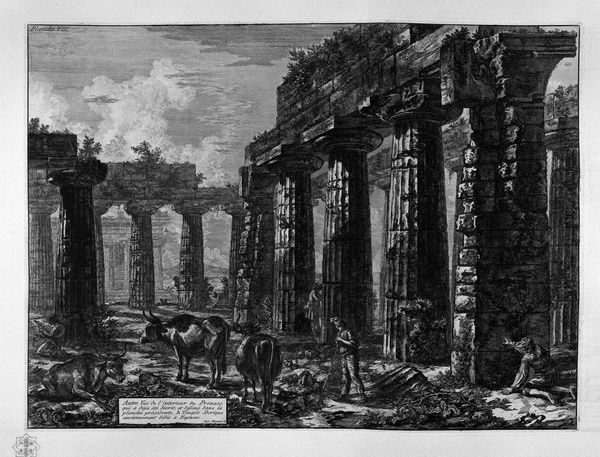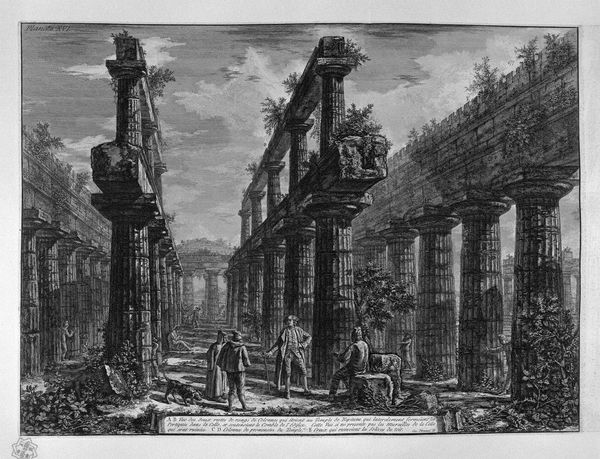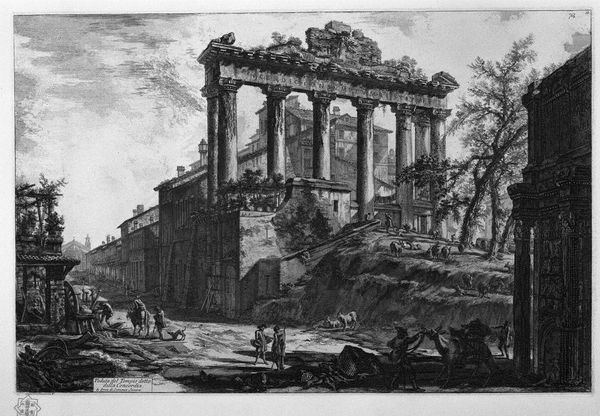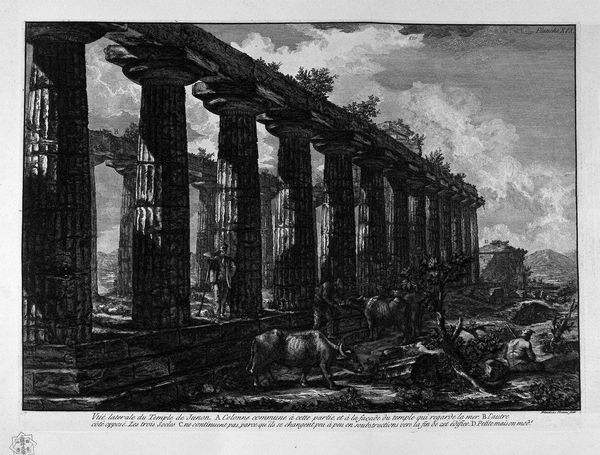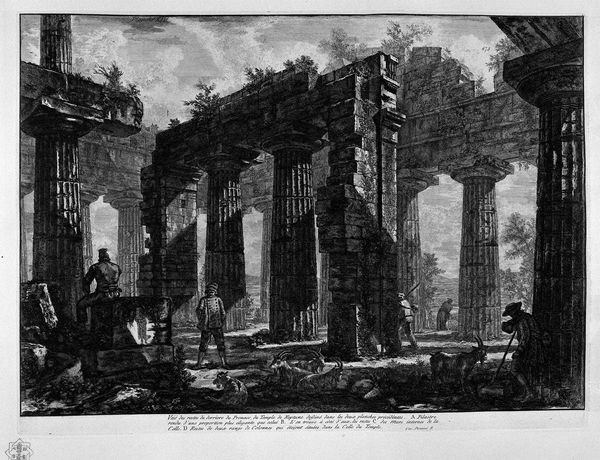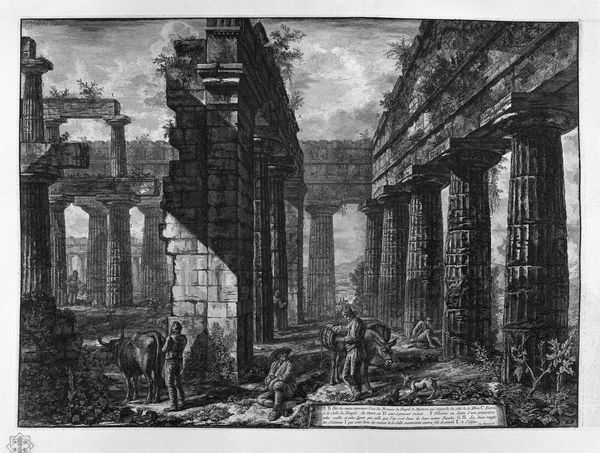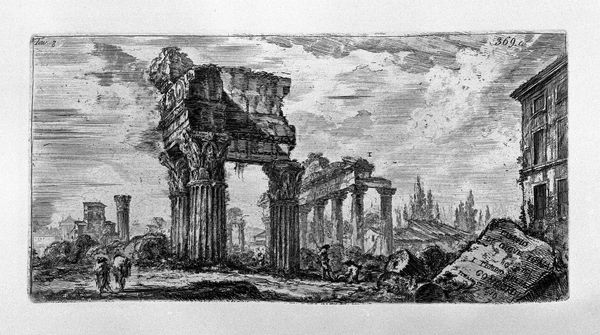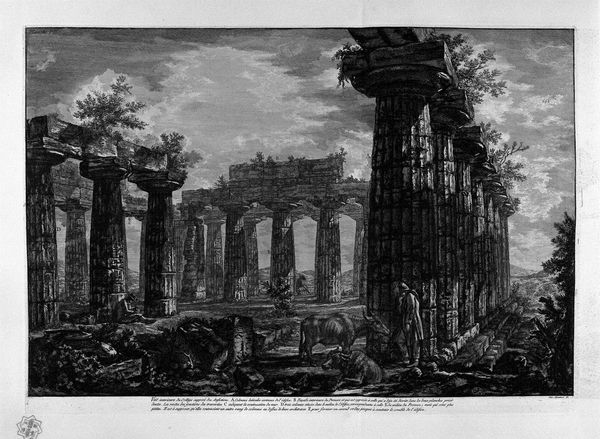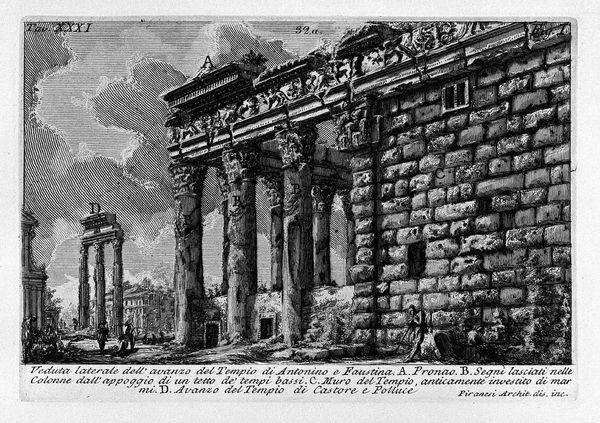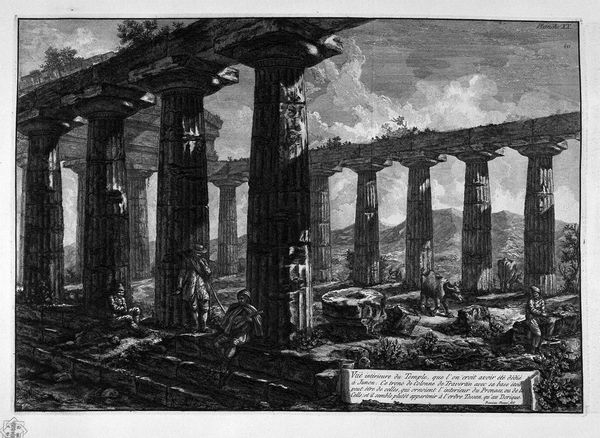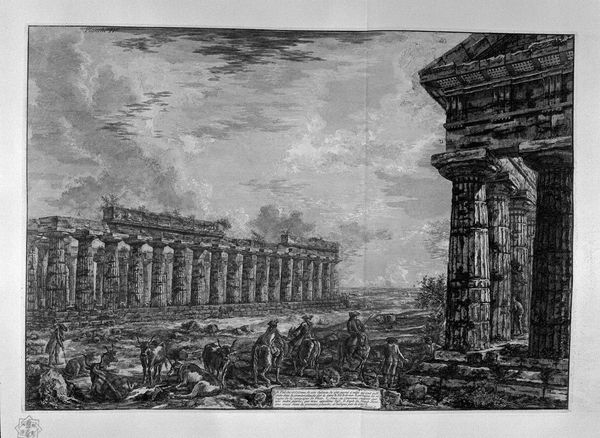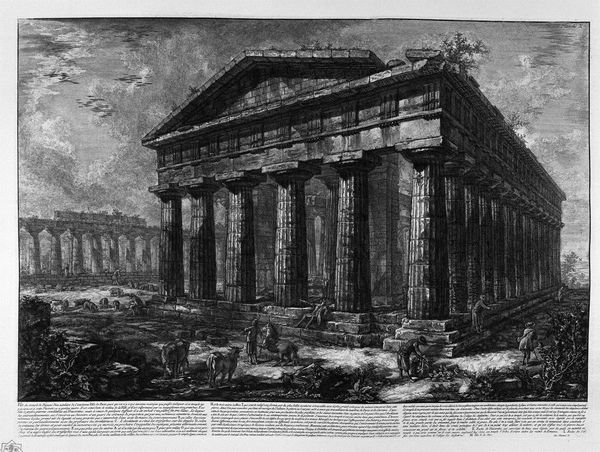
print, etching, engraving, architecture
# print
#
etching
#
sculpture
#
landscape
#
romanticism
#
engraving
#
architecture
Copyright: Public domain
Giovanni Battista Piranesi created this etching, “View the remains of the pronaos,” in 18th century Italy, capturing the grandeur and decay of ancient Roman architecture. Piranesi's work taps into the burgeoning Enlightenment interest in classical antiquity, but also reveals the social and cultural forces that shaped its interpretation. The image creates meaning through dramatic scale and contrast, presenting the ruins as both awe-inspiring and melancholic. Made during a time when Rome was a popular destination for Grand Tour travelers, it reflects the era’s fascination with the past, and the rise of archaeology. But the image also subtly critiques the institutions of art and power. By depicting the ruins overrun with vegetation and inhabited by common people, Piranesi challenges the idealized visions of antiquity promoted by the art establishment. Understanding Piranesi's work requires a look into period travelogues, architectural treatises, and the history of archaeological excavations. The meaning of his art is contingent on its social and institutional context.
Comments
No comments
Be the first to comment and join the conversation on the ultimate creative platform.

